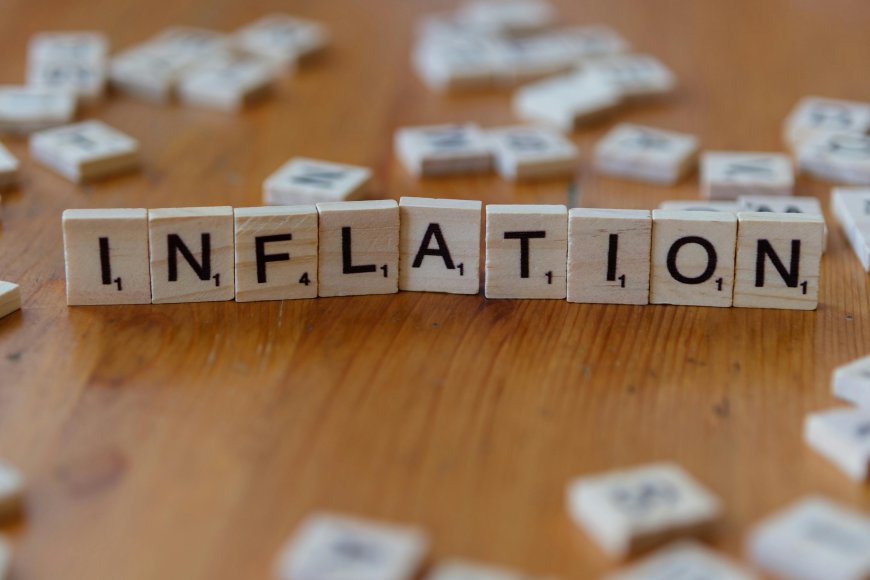CPI Inflation Rate Cools, But Prices Still Bite
Inflation eases slightly, but living costs remain high. What the latest CPI data means for households and markets.

The latest Consumer Price Index (CPI) report brought a cautious sigh of relief: inflation is cooling, but the reality on the ground feels far from easy. While the numbers suggest progress, families across the US, UK, Canada, and Australia still wrestle with rising rents, stubborn grocery prices, and unpredictable fuel costs.
Markets may be celebrating the slowdown, but for households, the story is more complicated. Beneath the headline figures lies a tale of uneven progress—one that determines not just central bank policies but also everyday choices, from mortgage decisions to weekly shopping lists.
What the Latest CPI Data Shows
The most recent inflation report indicates a modest slowdown. The annual CPI rate edged lower, suggesting that central bank efforts to rein in runaway prices are working.
- Energy costs: Fuel prices declined after months of volatility.
- Food prices: Groceries remain sticky, showing only slight relief.
- Housing costs: Rent and shelter continue to climb, offsetting other gains.
- Core inflation: Excluding food and energy, prices eased but remain above targets.
Economists argue this mixed picture signals progress, but not victory. Inflation is not disappearing—it’s simply moderating.

Why Inflation Feels Worse Than the Numbers
Statistical reports often fail to capture the emotional weight of inflation. While the data says prices are easing, families still notice their budgets stretched.
Imagine a parent walking into a supermarket. The CPI may show food inflation slowing, but the price of milk, bread, or fresh produce feels stubbornly high. Rent, meanwhile, doesn’t decline just because inflation moderates—it merely rises more slowly.
This gap between data and daily reality creates frustration, fueling public skepticism about economic reports.
Central Banks Walk a Tightrope
For policymakers, the CPI is more than a statistic—it’s a guide for action. Central banks in Washington, London, Ottawa, and Sydney now face a delicate balancing act:
- Raise rates further → Risk stalling growth and triggering recession.
- Pause hikes → Risk letting inflation linger above target.
- Signal future cuts → Could encourage spending before inflation is fully contained.
Recent statements suggest a cautious approach: keep rates steady until inflation clearly trends downward. Yet investors are already betting on rate cuts in 2025, anticipating relief for borrowers.

The Global Ripple Effect
Inflation doesn’t respect borders. A change in the US CPI affects global markets, influencing currencies, stock prices, and commodity costs.
- United States: Cooling CPI sparks optimism for rate cuts in 2025.
- United Kingdom: Inflation remains sticky, driven by housing and energy bills.
- Canada: Prices moderate, but mortgage pressures persist.
- Australia: Housing shortages keep CPI higher than global peers.
What unites all Tier-1 countries is the sense that while inflation has retreated from its peak, the scars of the last two years remain visible.
Storytelling: A Family’s Struggle with Rising Costs
Consider the story of Emily, a single mother in Toronto. Her rent increased by nearly 12% in the past year, swallowing up a larger share of her income. At the same time, the cost of fresh groceries—apples, chicken, cereal—rose faster than her paycheck.
For Emily, the CPI report feels abstract. What matters is whether she can cover bills without dipping into savings. Even if inflation slows, it doesn’t undo the price hikes already baked into the economy.
Her story reflects a broader truth: inflation isn’t just about numbers—it’s about lives disrupted, budgets stretched, and choices constrained.
Sectors Feeling the Pinch
Not all industries experience inflation equally. The latest CPI report highlights winners and losers:
-
Winners:
- Energy producers benefit from higher but stabilizing oil and gas prices.
- Grocery chains see higher revenues, though margins are squeezed by costs.
-
Losers:
- Retailers face shrinking consumer demand as households cut discretionary spending.
- Housing markets struggle with high borrowing costs, cooling transactions.
These shifts influence not just investors but also employment trends, corporate strategies, and consumer confidence.
What This Means for Households
For families, the CPI isn’t about stock markets—it’s about survival. Key takeaways for households include:
- Budgets remain tight → Even with cooling inflation, prices are elevated.
- Borrowing stays expensive → Interest rates remain high, keeping mortgages costly.
- Savings matter more → Families are prioritizing essentials over luxuries.
- Lifestyle adjustments → Travel, dining out, and entertainment spending slows.
The CPI may be a national statistic, but its impact is deeply personal.
Market Reactions: Stocks, Bonds, and Beyond
Markets react swiftly to CPI news. A softer inflation print usually triggers optimism, lifting stock indices and calming bond markets. Investors interpret cooling inflation as a sign that central banks may soon pivot toward easing policies.
Yet caution remains. Analysts warn that declaring victory too early could reignite inflation pressures, forcing policymakers back into aggressive action.
For investors, the lesson is clear: the CPI shapes everything—from equity rallies to currency swings.
Conclusion: A Turning Point or Temporary Pause?
The latest CPI data offers cautious optimism. Inflation is cooling, and central banks may finally be nearing the end of their tightening cycles. But the battle isn’t over.
Households still feel the sting of high prices. Rent, groceries, and essential goods weigh heavily on families, even as statistics suggest improvement. Markets may cheer, but the lived experience tells a different story.
The true test will come in the months ahead: can policymakers tame inflation without tipping economies into recession? Until then, the CPI remains the most-watched number in the global economy.
FAQs on CPI Inflation Rate
1. What does CPI inflation measure?
The Consumer Price Index tracks the average change in prices paid by consumers for goods and services, reflecting the cost of living.
2. Why does CPI matter for interest rates?
Central banks use CPI data to guide monetary policy. High inflation often leads to rate hikes, while cooling inflation can trigger cuts.
3. How does inflation affect households directly?
It impacts daily expenses—rent, groceries, fuel, and utilities—making budgets tighter even if wages rise.
4. Is inflation the same in every country?
No. Each economy faces different pressures, from energy prices to housing shortages, which affect CPI differently.
5. Will inflation keep falling in 2025?
Economists expect gradual improvement, but progress may be uneven, depending on global supply chains, energy prices, and central bank policies.
আপনার প্রতিক্রিয়া কী?
 পছন্দ
0
পছন্দ
0
 অপছন্দ
0
অপছন্দ
0
 ভালোবাসা
0
ভালোবাসা
0
 মজার
0
মজার
0
 রাগান্বিত
0
রাগান্বিত
0
 দুঃখজনক
0
দুঃখজনক
0
 বাহ
0
বাহ
0




























































